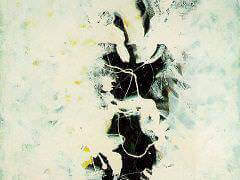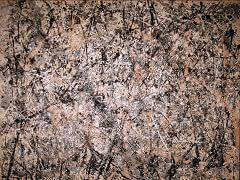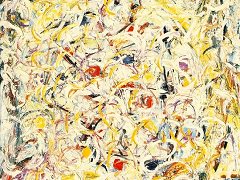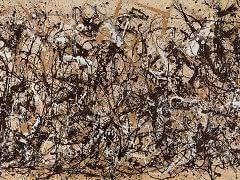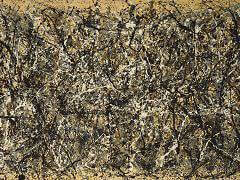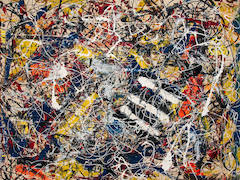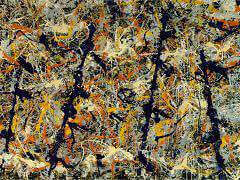Number 14 (Gray), 1948 by Jackson Pollock
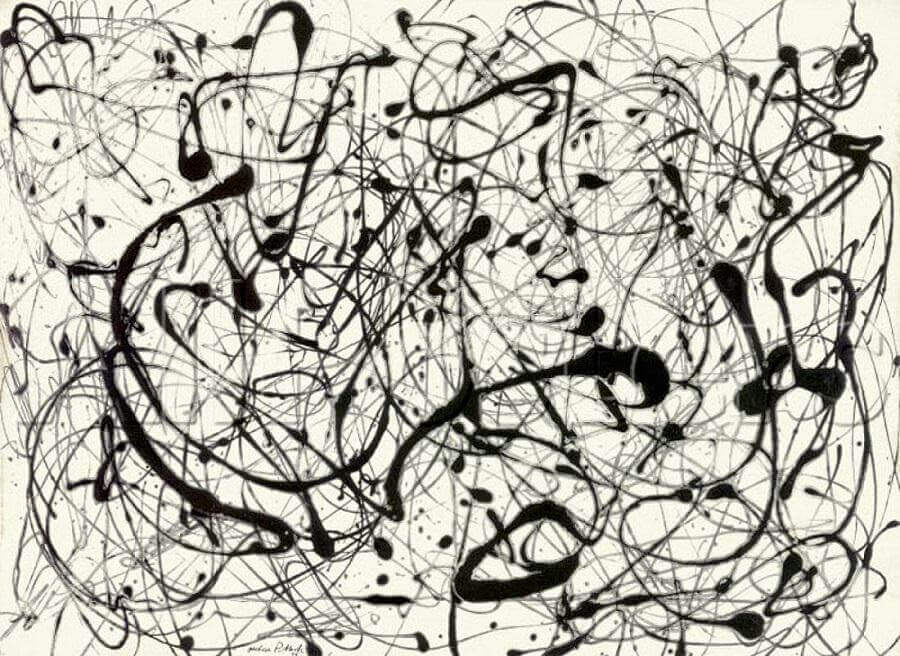
Jackson Pollock's classic poured paintings, made from 1947 to 1950, include several works in enamel on gesso-covered paper, of which Number 14: Gray is a particularly striking example. Pollock dripped the black enamel paint onto the surface while the gesso was still wet so that the paint bled into the chalky white ground, creating a silver-gray halo around the lines and pools of black. Pollock's pouring method was a breakthrough in his quest to avoid the illusionist space of traditional painting,and create a total visual effect. Number 14 epitomizes Pollock's new working method; the paint literally merges with the ground where enamel and gesso meet. In this period, Pollock strove to free line from the representational image and make it a function of pure movement.
My painting does not come from the easel. I prefer to tack the unstretched canvas to the hard wall or the floor. I need the resistance of a hard surface. On the floor I am more at ease. I feel nearer, more part of the painting,
since this way I can walk around it, work from the four sides and literally be in the painting.
I continue to get further away from the usual painter's tools such as easel, palette, brushes, etc. I prefer sticks, trowels, knives and dripping fluid paint or a heavy impasto with sand, broken glass or other foreign matter added."



